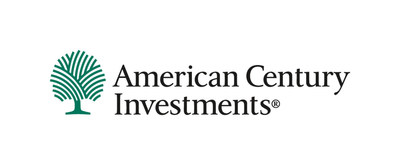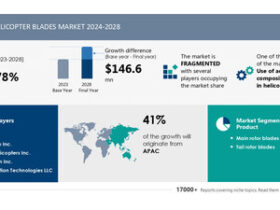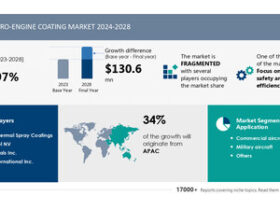With 35 days left until the U.S. election, American Century’s fourth quarter investment outlook focuses on election-related volatility and policy-related market impacts
KANSAS CITY, Mo. , Sept. 30, 2024 /PRNewswire/ — In its fourth quarter investment outlook, the $250 billion * global asset manager American Century Investments focuses on the volatility surrounding the upcoming U.S. election and the policy-related market impacts that could follow. According to American Century analysis of historical data, the best course during election-related volatility has been to stay invested, while current events anecdotally demonstrate how difficult it is to predict political events and how quickly political fortunes can change.
“In July, Trump survived an apparent assassination attempt, and the sitting president dropped out of the contest in favor of a new candidate, Vice President Kamala Harris . Each party named its vice presidential candidate by August and held a nominating convention. After each event, we could have cited headlines arguing for the ascendancy of one candidate or the other. The Harris-Trump debate in September is no exception. Which of these headlines should we have taken a position on? We hope it’s evident that the answer is none of them,” said Keith Lee , global growth equity co-chief investment officer of American Century.
Don’t sit out of the market during the typically temporary election-related market volatility
With little more than a month to go until the U.S. election, head-of-state elections in other countries this year have shown that even significant or surprise election results don’t lead to long-term market upheaval. Victor Zhang , chief investment officer of American Century, looks at election results and market impacts in India , the U.K. and France , noting that whether the election results were a landslide or slim victory, a surprise or as expected, the market impact has been temporary.
“While these results have tremendous implications in each country, they haven’t triggered sustained moves in global markets. U.K. investors had already priced in Labor’s victory, whereas the tighter races in India and France produced somewhat surprising outcomes and spurred temporary bouts of volatility. Temporary is the keyword. Market volatility is typical during election season , but the market has historically returned to more typical patterns during the year after votes have been counted,1 ” said Zhang.
According to American Century data analysis of the presidential elections from 1932 to 2021, it isn’t merely that election-related volatility will end soon after an election. In fact, sitting out of the market before and after an election has historically resulted in underperformance, with investors better off staying invested throughout the election season.
“We studied the results of staying fully invested in stocks versus going to cash for six months before and after a presidential election. Despite elevated volatility during this span, being fully invested outperformed by a wide margin. Similarly, choosing to be in cash before or after the election underperformed the fully invested approach,2 ” said Zhang.
Fundamentals of asset allocation trump efforts to profit from election-related volatility
At the same time, American Century’s chief investment officers assert it is difficult for an investor to leverage election-related market volatility to ride the highs and avoid the lows.
“Data shows that trying to get in and out of the market based on the election calendar doesn’t work as well as riding out the uncertainty,” said Zhang. “With all this in mind, the sound investment strategy for election years goes back to the fundamentals of asset allocation. That means accounting for the time horizon, the purpose of the funds you’re managing and your tolerance for risk.”
Agreeing that investing based on political prognosticating is ill-advised, Lee elaborated on the connection between identifying solid businesses and their likelihood to successfully navigate various political outcomes.
“As we near the end of the electoral season, clients ask what we’re doing about the elections and how we’re positioning for this or that political outcome. But that’s not how we manage money, and we don’t believe you should either,” said Lee. “Rather than focus on political headlines, we put our energy into identifying good businesses. We believe companies with solid long-term growth prospects are more likely to generate wealth for our shareholders over time. These firms are also better situated to ride out electoral or economic uncertainty.”
Similarly, Patricia Ribeiro , global equity co-chief investment officer of American Century, advises investors not to lose sight of more significant indicators and drivers of market movements, even if they don’t compete with the overwhelming attention on the election’s impact to markets.
“The U.S. presidential campaign will dominate the news cycle and could be a source of volatility throughout the fourth quarter. In the long term, however, demand for goods and services has a much more significant impact on investment results,” said Ribeiro.
Don’t sleep on real policy-related market impacts
American Century does not use anticipated election outcomes in its investment process because it doesn’t believe it leads to better performance, but that doesn’t mean policies don’t impact the market. For example, Ribeiro points out that tariff and trade policy is unique because of the ease a U.S. president has in unilaterally effecting change.
“Candidates’ views on trade and tariffs are worthy of attention because the president doesn’t need a cooperative Congress to enact policy. So, whoever moves into the Oval Office on January 20, 2025 , will have the authority to act unilaterally on an issue with significant economic implications.”
Lee looks at productivity as a solution to our aging society and shows how productivity offers benefits to both workers and businesses, but that relationship is influenced by policy. “Policymakers have a role in how the costs and benefits of productivity gains are distributed throughout the economy. For example, before the 1980s, productivity and wage gains went hand in hand. But policy changes since then have weakened the relationship . The point is that policy choices go a long way toward determining who benefits from rising productivity and to what extent.”
Another area where American Century is tracking a policy that could impact markets is in mergers and acquisitions. Kevin Toney , global value equity chief investment officer of American Century, noting that while the evidence is mixed and unclear, “The outcome of the November election may affect the climate for corporate mergers in 2025 and beyond, although we don’t necessarily think investors should base their investment decisions solely on this issue.”
For more investment insights for the fourth quarter, read the full American Century investment outlook , with insights on:
Global macroeconomic outlook , U.S. equity outlook , Global equity outlook , Global fixed income outlook , Multi-asset strategies outlook and Sustainable investing trends . About American Century Investments
American Century Investments is a leading global asset manager focused on delivering investment results and building long-term client relationships while supporting breakthrough medical research. Founded in 1958, American Century Investments’ 1,400 employees serve financial professionals, institutions, corporations and individual investors from offices in Kansas City, Missouri ; New York ; Los Angeles ; Santa Clara, California ; Portland, Oregon ; London ; Frankfurt, Germany ; Hong Kong ; and Sydney . Jonathan S. Thomas is president and chief executive officer, and Victor Zhang serves as chief investment officer. Delivering investment results to clients enables American Century Investments to distribute over 40% of its dividends to the Stowers Institute for Medical Research, a 500-person, nonprofit basic biomedical research organization. The Institute owns more than 40% of American Century Investments and has received dividend payments of more than $2 billion since 2000. For more information about American Century Investments, visit www.americancentury.com .
*Assets under supervision as of 9/6/24.
©2024 American Century Proprietary Holdings, Inc. All rights reserved
References to specific securities are for illustrative purposes only and are not intended as recommendations to purchase or sell securities. Opinions and estimates offered constitute our judgment and, along with other portfolio data, are subject to change without notice.
Diversification does not assure a profit nor does it protect against loss of principal.
Past performance is no guarantee of future results. Investment returns will fluctuate and it is possible to lose money.
The opinions expressed are those of American Century Investments (or the portfolio manager) and are no guarantee of the future performance of any American Century Investments’ portfolio. This material has been prepared for educational purposes only. It is not intended to provide, and should not be relied upon for, investment, accounting, legal or tax advice.
Media Contact: Nicole Glenna , nicole_glenna@americancentury.com
1 FactSet, U.S. National Archives, Library of Congress, American Century Investments.
2 Based on data from 4/30/1932 – 12/31/2021. Source: FactSet, Ibbotson and Associates, Inc., U.S. National Archives, American Century Investments. Four hypothetical investor scenarios were analyzed for each presidential election since 1932. Each hypothetical investor invests $10,000 six months before the presidential election and remains invested in stocks or cash for the six months before and after the election.
View original content to download multimedia:https://www.prnewswire.com/news-releases/fourth-quarter-investment-outlook-from-american-century-investments-302263079.html
SOURCE American Century Investments











Leave a Reply